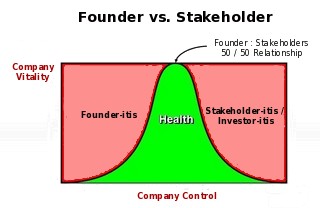
This manual has been written inspired by the “Simple Sabotage Field Manual – How to Destroy Your Organizations”.
It was originally drafted in a period of time when I was astonished by the way how ‘doublespeak’ is being used in organisations to prevent change management initiatives, including – but not limited to – sustainability related ones.
Readers of this blog will know that I have written about this topic in multiple times before. In multiple contexts, using multiple, and varied wording: Responsibility, accountability, being responsible, or being held accountable; fiduciary duty, responsibility for future generations, or for the success of a business in a world that will be and look and function so very different from the current on. Sometimes I simply call it ‘getting the job done’.
But what I am talking about at all?
So often I hear words such as, or similar to: ‘we would if they let us’. ‘For them it is only about the growth percentage at the end of the quarter. ‘ or ‘if we ask questions, we are told by them: do as I tell you, or else you’ll be looking for a new job’.
This is the way (sustainability) disempowerment manifests in organisations.
Very little of that has to do with how hierarchical a company is organised on the official org chart or what the official company values and ‘people management’ strategies are. Instead, it has to do with the truly lived values, how people are being treated daily, and the type of results that earn staff recognition and promotions – or not.
The following hence is a cynic-sarcastic-semi-realistic manual on how to be reasonably successful in disempowering an organisation. It is applicable to all areas that encompass change including innovation, sustainability, internationalisation, digitalisation and so forth.
Attributes (‘ingredients’) that influence how successful such disempowerment in practice is are:

- Steepness of the actually lived corporate hierarchy [which may or not at all reflect the one on paper]
- The every day lived value of a company are, which manifest in how everyone is treated on an ongoing basis, and what decisions are prioritised when push comes to shove,
- The amount of slack that people are being cut if they behave unacceptably and disrespectfully: ‘everything is game’ as long as these individuals still ‘deliver’ to the bottom line of the next quarter? Or: values and respect are the glue that holds a company together?
- Semi-active leadership: Leadership that focuses only on one part of the company picture (often: cost and bottom line returns), while being overwhelmed (read: incapacitated) by the complexity that other dimensions (people, non-financial metrics) bring.
Simple steps to ensure organisational disempowerment

The easiest to disempower an oganisation is obviously when you are in the lucky position to be one of its leaders: The CEO, CFO, COO, or – much more effective still – a majority owner of shares, as is often the case in privately owned companies and family companies.
In this position you can create disappointment as well as demotivate staff throughout your organisation by …
- Insisting on non-realistic growth rates for the type of product and market you are in, while at the same time linking investments in innovation to achieving precisely those growth rates.
- Ensuring your CFO exclusively focuses on a very small set of financial metrics (margin and bottom line, as well as on cost reductions) while ignoring the bigger picture.
- Choosing managers whose sole perception of success is the margin and channel growth rate. Fire them immediately if they do not achieve those margins and growth rates for anything more than a single quarter.
- Encouraging a ‘say as I do, else get walking’ attitude by those channel managers within their teams and extended teams.
- Ensuring that ‘innovation’ refers only to incremental changes. New and ‘different’ product types have to go through a lengthy, costly and inappropriate (because truly novel) marketing procedure before they are added to the product range. The purpose is to never allow the creation of ‘revolutionary’ products.
- Ensuring the innovation teams are overwhelmed with sussing out small incremental changes.
- Ensuring that the quality, sustainability, and compliance teams have no veto power in product development, sourcing and bring-to-market processes. At the same time ensure that product, sourcing and marketing teams are recognised for cutting costs whenever possible.
- Never setting budget aside for projects such as sustainability, IT systems upgrades etc., but instead requiring other department to cut back to free up ‘special’ budget.
- Only comparing your company with competitors that are doing worse – never to those leading the charge.
- Hiring people based on job description that empower them to take decisions and move the ball forward. Once hired, require them to consult with you – or their managers – during onboarding on any decisions they plan to take. Ensure to pre-empt any such decision, or at least kick them down the path repeatedly.
- Always refering to ‘best practice’ without being clear about what it means.
- Always promising change to those hanging on and working their but of to make the company a better place – and never keep those promises ‘because the company is not doing well enough’ financially or in any other way you can think of.
But even if you are not in a leadership position, there is plenty of ways of how you can drive your colleagues and direct reports into disempowerment. Here is how to do that:

- Be explicit on who’s view and decision has priority: it is yours.
Do not hesitate to tell your team ‘ say as I do, else get walking’. - Never accept changing your ways and the way things have been done so far.
With one exception: use every opportunity to cut costs and increase margin.
Even if it is at the cost of quality or compliance, as it were. - Make absolutely sure that the only accountability is the quarterly financials.
Do not accept any accountability for longer-term goals that may require you to change the systems you have in place to get to the required financial numbers.
Certainly do not take any accountability for product or production related decisions – unless they have been broken down prior to black-and-white financial considerations focused on the quarterly results. Only if absolutely unavoidable accept financial considerations for future products to be launched. - Delegate any accountability you are not comfortable with either up, or down.
Ensure you have always a suitable scape goat at hand. - Failing all that, revert to the statement ‘we are working on it’ while ensuring there is no capacity do genuinely do so.
- Overwork your team on an ongoing basis, so they have no possibility to reflect.
If needed, drive them to exhaustion and burn out, if that ensures that rebellious thoughts are kept at bay.
In addition, there are some methods how you can frustrate the hell out of any colleague, no matter what your position is. Those are:

- Do not take your time to respond to urgent emails. After all your extremely busy.
- Do not answer any email that could be the start of an innovative project, or change waiting to happen. Not even on follow up. If pushed for an answer: ‘We have no capacity to deal with that’.
- Discredit in-house expertise whenever possible. This can be done in two ways: One, pick a result and claim this looks strange – ask for it to be verified. Repeat at nauseam. Or two: bring up a real or imaginary character of the past who taught you differently. And have people loose a lot of time by searching out scientific written sources.
- If there are major changes coming: ask for support of an external consultant. Go through an extremely thorough Due Diligence and proposal cycle. Then: Doubt the availability of budget. Hope that it all will be overtaken by bigger priorities rather earlier than later.
- Never document anything. Ensure systems information is outdated or lost in email threads. This is particularly relevant for any relevant decisions that entails accountabilities. Ensure all important decision are taken whenever possible ad hoc, and in the spur of the moment.
Scaling disempowerment efforts further: Apply organisational sabotage strategies

Change management is about collaboration – which means that the above mentioned Simple Sabotage Field Manual – How to Destroy Your Organizations is applicable and of extremely good use. Follow it meticulously, in accordance to whether you hold a leadership position, are a simple associate, or simply a jealous individual.
The manual is to the point, easily usable, and requires no prior expertise in sabotage – albeit it does require some common sense as well as everyday discipline.
If the disempowerment efforts explained in detail above have not carried sufficient fruit until this moment, complementing them with sabotage strategies will with absolute certainty lead to the success you are envisioning.

